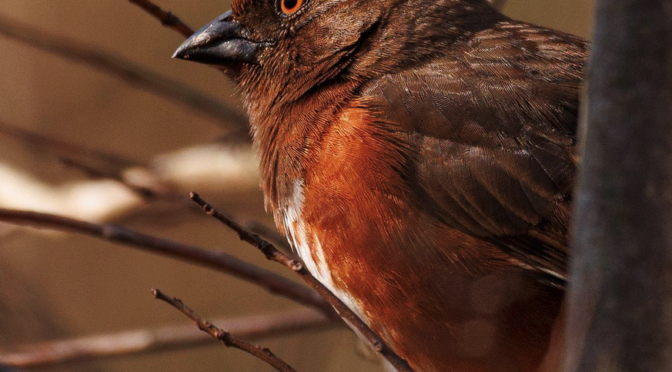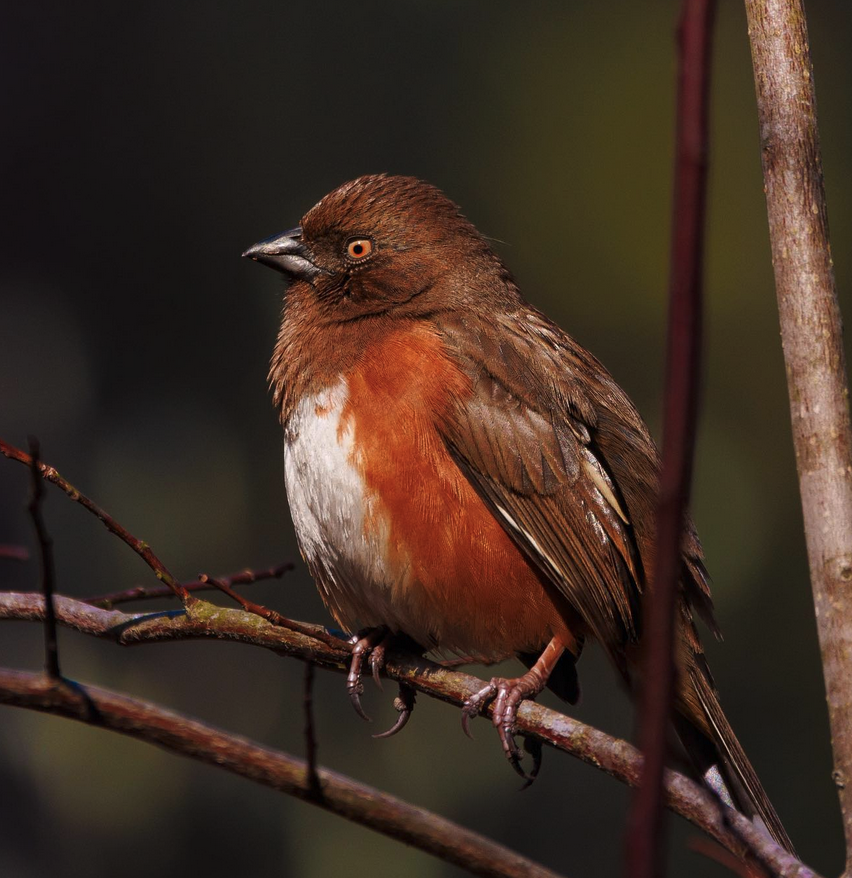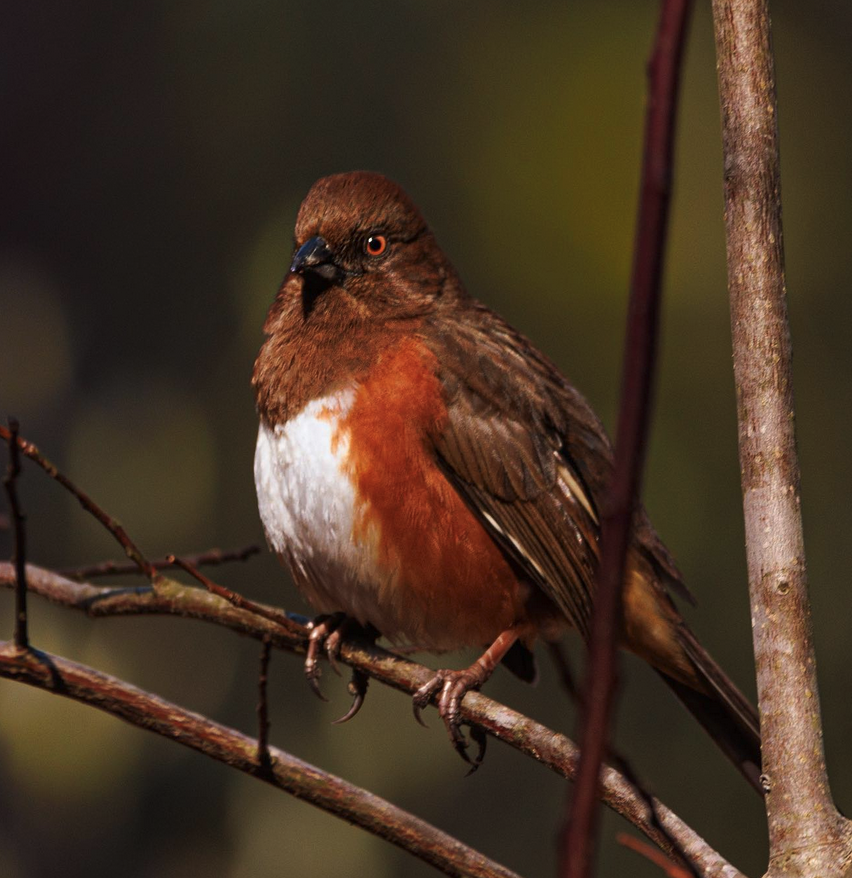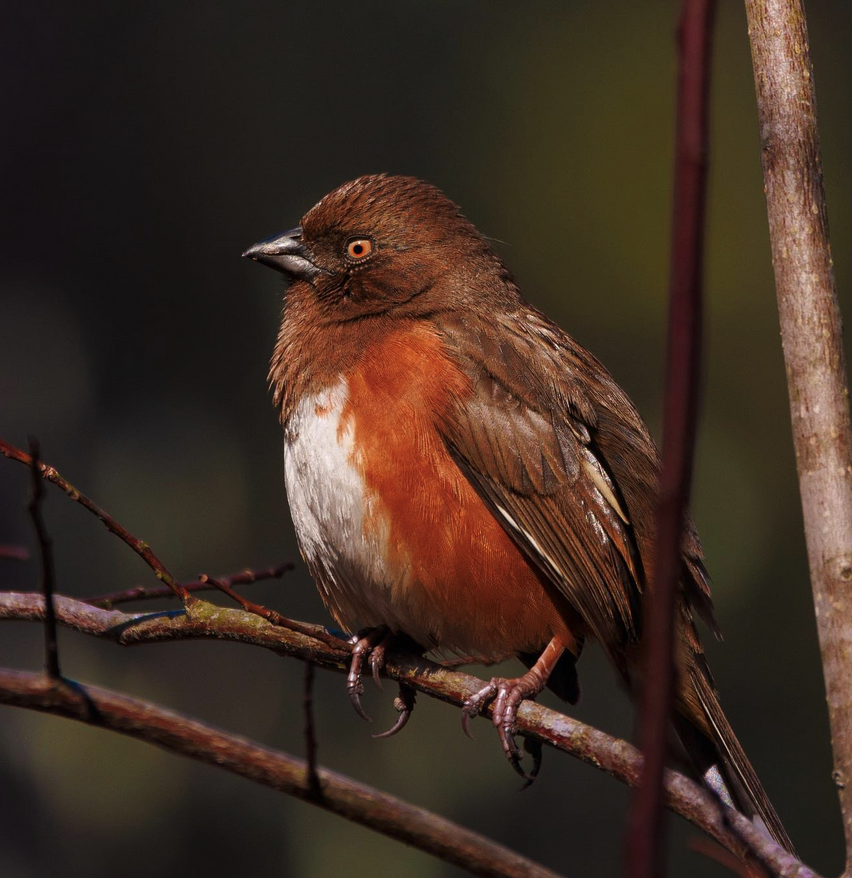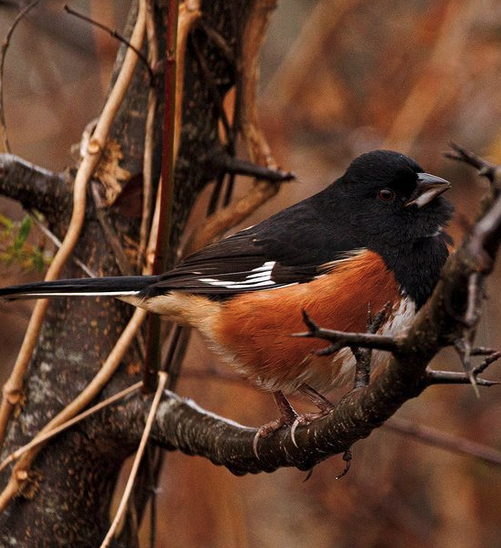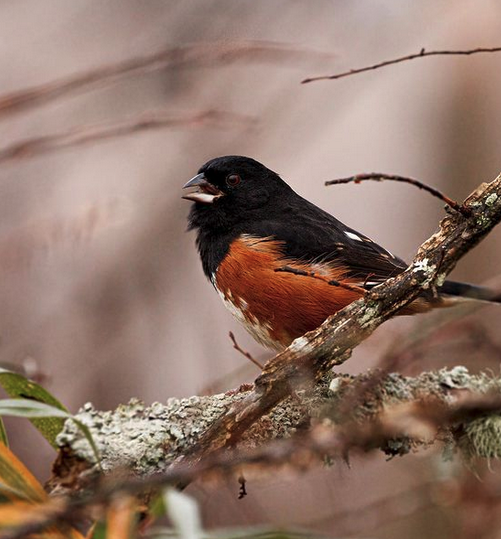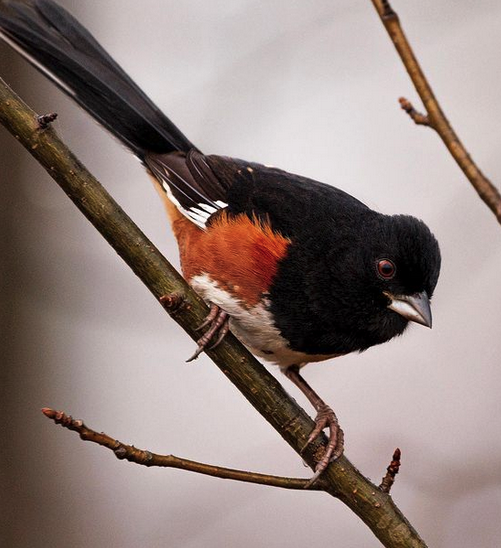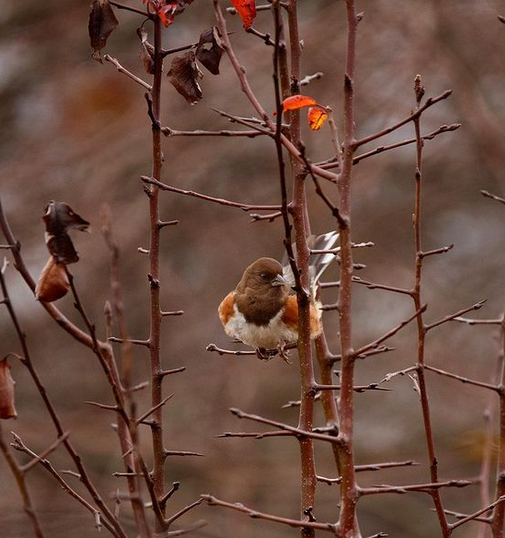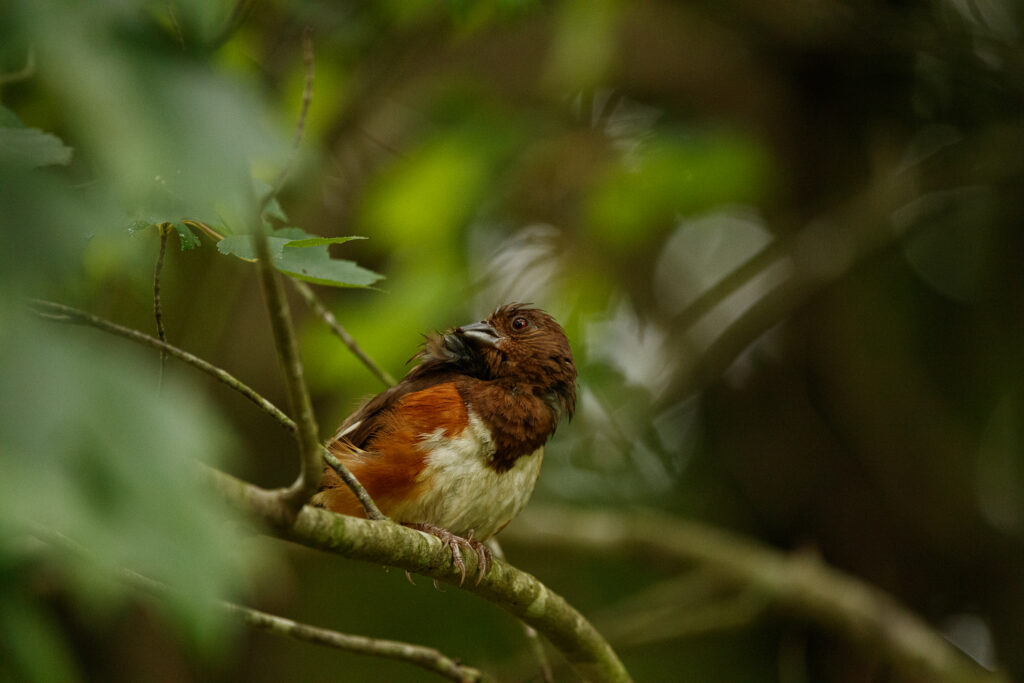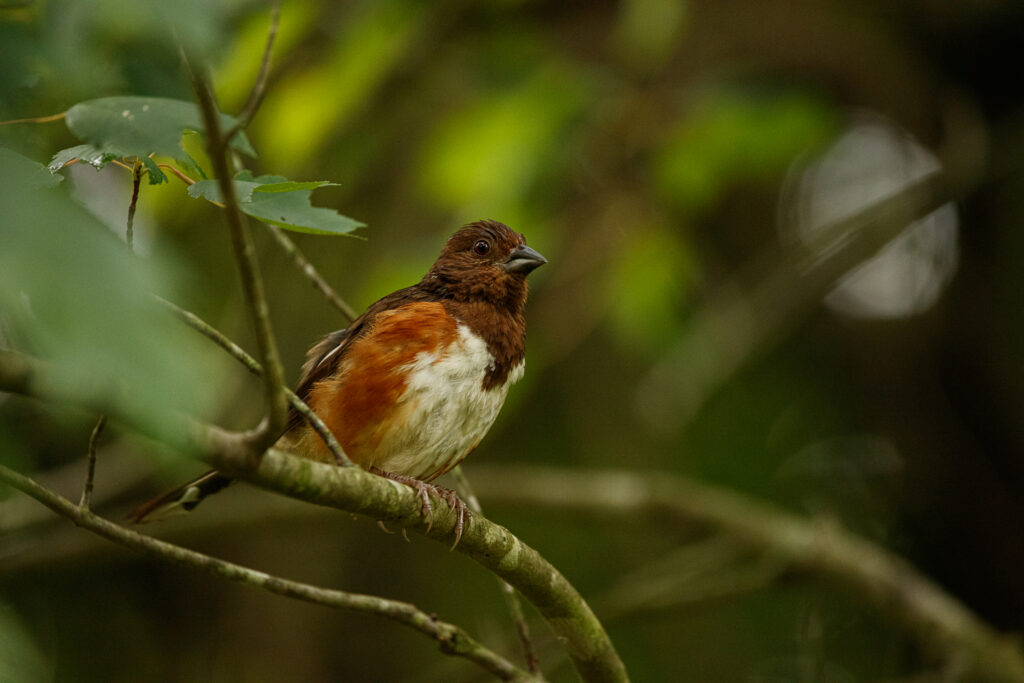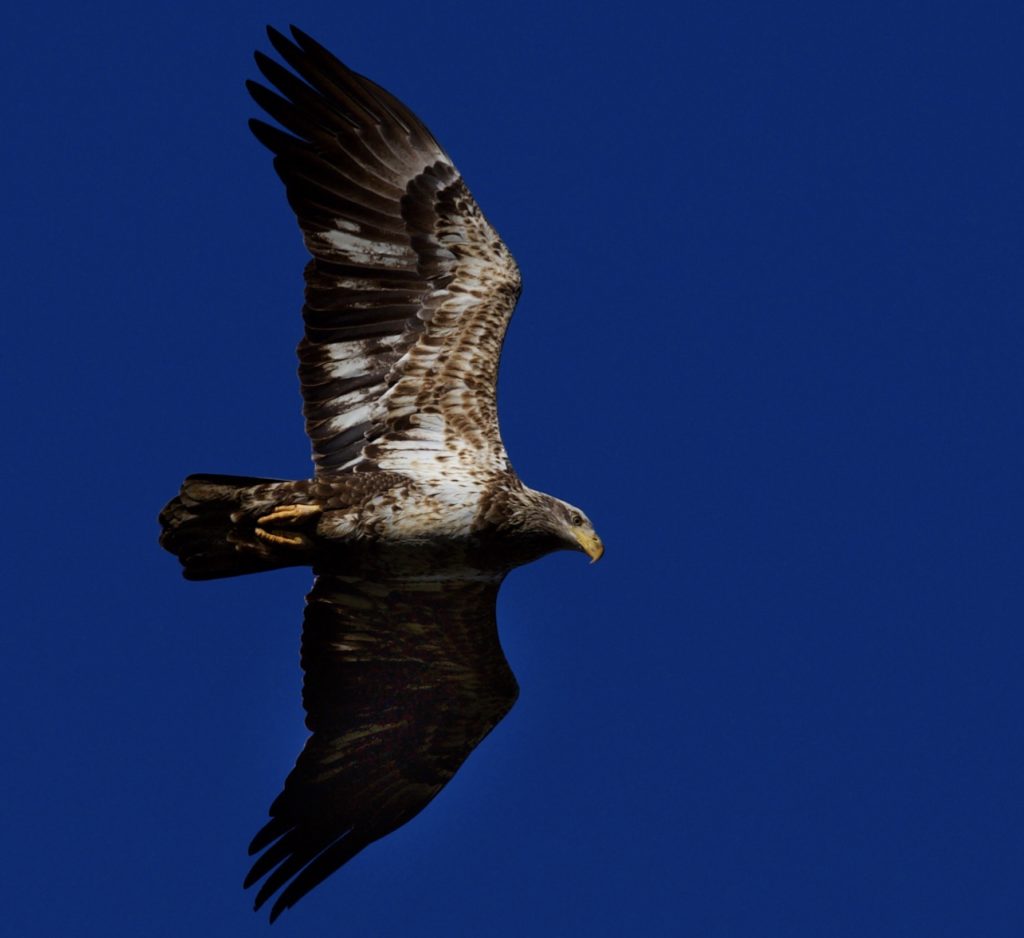By Sally Siko
The Eastern Towhee is one of those birds that we hear all the time here in North Carolina but not often see. They are shy, secretive birds yet their loud call of “drink yourrrr teeeee” helps us find them while hiking in the woods. I spotted this handsome Towhee while birding the in Boone NC.

Eastern Towhees are a year round resident of NC and are one of a handful of species that nests from the coast all the way up to the higher elevations of the Blue Ridge Mountains.
They are best found in areas where there is dense woods and scrub brush available for them to forage for a meal.
I’ve had luck spotting them in thick bushy patches both in the OBX region in eastern NC as well as in the dark Rhododendron thickets of our western mountains.




Towhees are generally ground nesters and will usually build their nest in a clump of leaves or in the tall grass at the base of a tree. They’ll also occasionally build their nests in tangled briars about 2 to 4ft off of the ground.
Both parents take care of the chicks who will leave the nest around 11 days after hatching.
Interestingly the young will hang out with their parents after fledgling for a few months before moving on to scout their own territories.
During the spring and summer their diets mostly consist of insects and fruit.
In fact one of the easiest ways to find a Towhee is to look on the ground beneath shrubs to see them kicking up a six or eight legged meal beneath the leaf litter.
Now that winter is here, they’ll switch to eating seeds and will begin visiting our backyard feeders more regularly in search of a snack.
Photos by @sally_siko of @bestlife_birding captured on my mighty mirrorless monster, the @canonusa #R5


